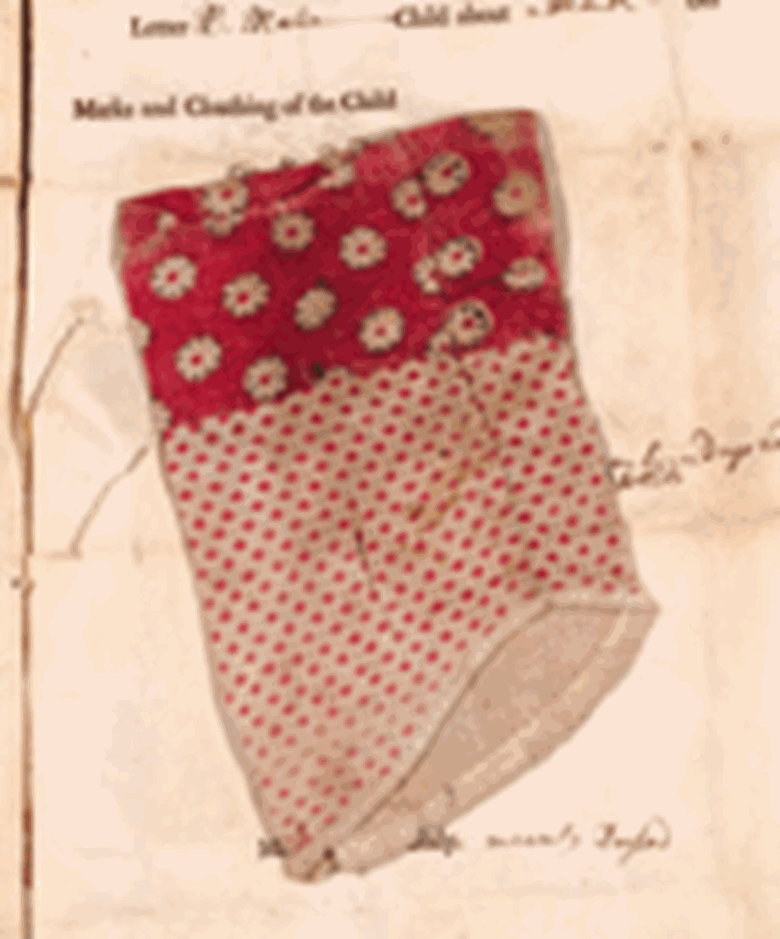Positive Relationships: Transitional Objects - Threads of feeling
Roger Bullock
Tuesday, November 16, 2010
The present is linked to the past in a museum exhibition about children and the effects that separation has on them, described by Roger Bullock.

The Coram Foundation was created in 1739 when the physician Thomas Coram established the Foundling Hospital in London. In subsequent years, hundreds of babies whose mothers were unwilling or unable to care for them were admitted to the organisation.
But today, there is no need for such a service; the stigma of illegitimacy has diminished, vulnerable mothers get help and adoption provides for those who need new families. The Foundation has continually adapted its provision in the light of changing needs.
One increasing problem is the arrival in this country of unaccompanied asylum-seeking children. Coram provides a Supported Housing Service for up to 30 young people at risk of being homeless. Some of them will have left or been sent by their families from war-torn countries, such as Afghanistan and Somalia, and often arrive in the UK destitute and alone.
There is little public sympathy for these young people and it is difficult for outsiders to appreciate the struggles they face each day - hostile responses from an indifferent public, an unsympathetic benefit system, bureaucratic officials, harassment and racism.
Whatever their situation, all will feel anxious and lonely, the hope of new opportunities offset by remembrance of things past. These feelings can arise almost without warning, sparked off by a smell or sound, leading to a longing for something seemingly trivial: a favourite dish or the sound of someone's voice.
SOMETHING SPECIAL
Transitional objects are one means of imposing some continuity on a fluid situation. The circumstances of young people's movements mean that nothing bulky can be taken, but all tend to keep a few possessions that remind them of something special. It may be a decoration from a Christmas tree that recalls a happy family occasion or, as on display in the Foundling Museum exhibition, a wrap of coarse material given to a young girl by her African grandmother as she set off for chilly England with the reassuring, if impractical, advice, 'Wrap this round you if you get cold'.
Of course there is nothing new in the ability of inanimate objects to arouse deep emotional feelings. At the end of his poem 'Ode on Intimations of Immortality', Wordsworth says 'To me the meanest flower that blows can give thoughts that do often lie too deep for tears', putting in a nutshell the ability of an inanimate object to set off trains of thought personal to each individual. These might be good or bad, old or new, and can be aroused by sight, smell, sound or touch. Feelings may be mixed, with memories of happy times alongside grieving a lost past, sensations of excitement and fear, recollections of opportunities lost and decisions made.
COPING STRATEGIES
We all experience separation and loss from people we love and communities that support us. The list is long: it includes bereavement, hospitalisation, boarding schools, entry to care, evacuation, family breakdown and migration. Most children manage in the end and the transition might well have been worth making, but apparent resilience should not mask the deep sense of loss they feel and the threat to their psychological well-being.
So how do youngsters cope? Many strategies are deployed. Among these are personal contacts by letters, cards and electronic communication; visits that allow separated parties to maintain relationships and keep up with gossip; and retaining keepsakes to remind them of people and places. But some cannot reveal to anyone that they are in contact with a loved one, for fear of being returned to their homeland.
When mothers handed over their babies to the Foundling Hospital, no records were kept that could link a mother to her child. But to ease reunion if it ever should occur, the mothers attached a piece of fabric to the admission document so this could act as an identifier should she ever want to see her child. These pieces of material were filed as part of the institution's records.
In the exhibition 'Threads of Feeling', these materials are displayed alongside very different modern objects that demonstrate Coram's current services, which shows how the emotions associated with separation and loss have scarcely changed. You see simple and sometimes pitiful modern objects that convey deep feelings. They include the wrap of coarse material given by the grandmother, and rosettes carefully made by current Coram participants that incorporate the symbols of loss - hearts, birds and flowers - that decorated the original materials left by mothers so long ago.
The exhibition illustrates some of Coram's current work with separated and vulnerable children - adoption, supported housing and creative art therapy - recognising the feelings associated with separation and loss that have endured through the ages.
- Roger Bullock is the editor of the Journal of Adoption and Fostering. 'Threads of Feeling: Fabric swatches from the 18th century that tell stories of mothers and babies parting' is on until 6 March 2011 at the Foundling Museum, 40 Brunswick Square, London WC1N 1AZ (020 7841 3600, www.foundlingmuseum.org.uk)




